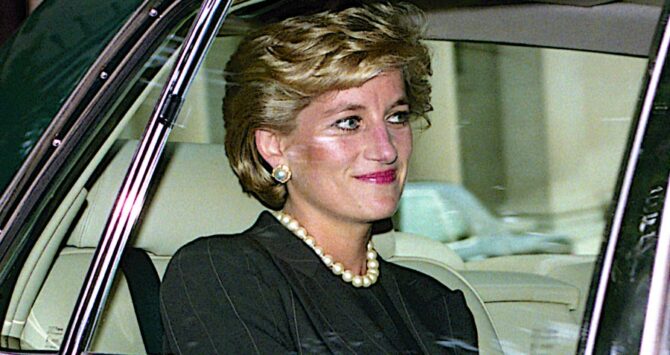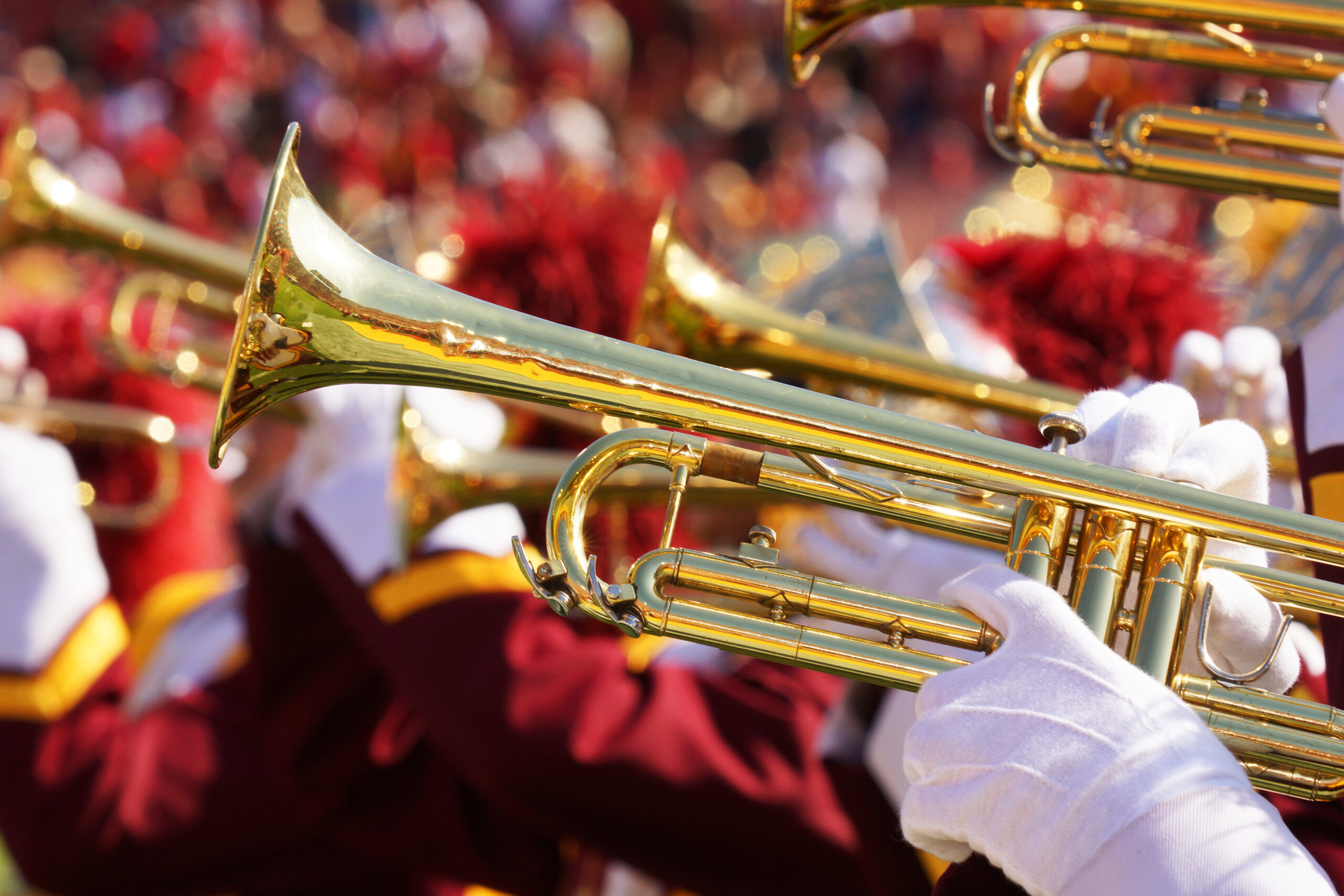
The death of Princess Diana in 1997 devastated the world. Many in the LGBTQ community felt the pain of her loss acutely.
Her life and death are making headlines again with the premiere of The Crown season five, arriving November 9 on Netflix. Elizabeth Debicki takes on the role of Diana for the 1990s-set season.
Emma Corrin played a younger Diana in season four, entering what many believed to be a fairytale marriage. Of course, that soon turned out not to be the case.
Season five explores the breakdown of Diana’s marriage to Prince Charles and how she reframed herself as a humanitarian champion in the years after.
It will also depict Diana’s final hours in Paris, with her boyfriend, Dodi Fayed.
How the hit show will portray the final years of Diana has already prompted controversy in the UK, with some critics blasting producers as exploitative. There’s also the risk of offending family members still alive: primarily her sons, William and Harry.
Others hope that it illustrates why so many members of the public loved Diana.
The People’s Princess

While there’s no evidence to suggest Diana was gay herself, she did plenty to earn her gay icon status. The princess famously raised awareness around HIV and AIDS at a time when the epidemic was cutting a swathe through the community.
In fact, Diana was one of the first celebrities photographed holding the hands of AIDS patients at a time when others shunned them.
Her compassion for those less fortunate inspired former British Prime Minister Tony Blair to refer to her as the “People’s Princess” in the aftermath of her death.
She was known to be friendly with several gay men, including designer Gianna Versace, and musicians Elton John, George Michael and Freddie Mercury.
Perhaps because she married into the Royal Family, and her subsequent treatment when her marriage began to crumble, she was seen by some as an outsider, and a potential threat, to the British monarchy.
That status as an outsider—a threat to the order of things—is one that many queer people can relate to.
Let’s look at some of those reasons in more detail…
Princess Diana and AIDS awareness

It’s hard to remember how frightening AIDS was when it first began to cut people down in the 1980s. There was no effective treatment and tremendous stigma.
Those impacted—primarily gay men—often suffered slow, debilitating illnesses before their almost inevitable death. Many were ostracized by their friends and families for having what the world regarded as a “gay disease.”
In this context, Princess Diana’s decision to visit AIDS hospices, and to be photographed shaking hands with patients, was groundbreaking and powerful. Diana officially opened the UK’s first HIV/AIDS unit, at London’s Middlesex Hospital, in 1987.
Author Andrew Morton, in his 1992 book, Diana, wrote that the Princess, photographed holding the hand of someone with HIV, did “more than anyone alive to remove the stigma surrounding the deadly AIDS virus… While she was not able to fully articulate it, Diana had a humanitarian vision for herself that transcended the dull dutiful traditional royal engagements.”
Related: Prince Harry vows to continue Diana’s HIV work
Public and private support
She made several visits to the London Lighthouse hospice in West London, both publicly and privately.
David Hodge worked at the reception desk. In his recent memoir, The Boy Who Sat By The Window, he wrote of coming face to face with Diana on one such private visit.

“She’d made it her goal to help shatter the myths around transmission of the virus and to do whatever she could to help in this dreadful crisis. That help was gratefully received. She’d often arrive in secret … and be whisked up to the residential unit where she’d chat and drink tea with the service users, many of them extremely sick or close to death. She’d also give support and encouragement to the staff, who were having to deal with many challenges, both physical and emotional.”
In April 1991, she famously gave a speech at the Children and AIDS Conference.
“HIV does not make people dangerous to know, so you can shake their hands and give them a hug,” she said. “Heaven knows they need it.”
Princess Diana’s relationship with Freddie Mercury and gay celebrities
There’s a legendary story about Princess Diana and Queen singer Freddie Mercury. It came to light in a 2013 memoir by Cleo Roccos, a comic actress and close friend of the radio DJ Kenny Everett.
Roccos claimed that one afternoon in the 1980s, she, Everett, Mercury and Diana spent an afternoon together. They drank champagne and watched episodes of The Golden Girls. As the afternoon turned to evening, they decided to have some mischievous fun and visit the iconic gay bar, The Royal Vauxhall Tavern.
However, how could they avoid Diana, one of the most famous women on the planet, being hassled by other customers? Their solution was to disguise her in drag, as a “rather eccentrically dressed gay male model.”
According to Roccos, they resorted to a baseball cap, sunglasses and a bomber jacket: “She did look like a beautiful young man.”
“When we walked in…we felt she was obviously Princess Diana and would be discovered at any minute,” Roccos wrote. “But people just seemed to blank her. She sort of disappeared. But she loved it.”
Roccos says the group ordered drinks at the bar but left after 20 minutes, delighted to pull off the subterfuge.
Mercury and Everett both later died from AIDS (in 1991 and 1995 respectively).
Elton John

Princess Diana was also friends with Elton John.
Elton first met her in 1981.
“Over the years I knew her, she was fabulous company, the best dinner party guest, incredibly indiscreet, a real gossip: you could ask her anything and she’d tell you,” he wrote in his memoir, Me.
Related: Elton John’s touching tribute to Diana on the anniversary of her death will leave you teary-eyed
However, she and Elton had a falling out in early 1997.
Elton says it was because Diana had promised to write the forward to a photographic book Gianni Versace was putting together. Sales of the tome benefited the Elton John AIDS Foundation. However, Diana later rescinded this offer. Elton thinks people within the Royal Family dissuaded her from lending her name to a book that featured some risque photos. We may never know for certain.
However, when Versace was murdered in 1997, Diana and Elton were photographed side by side at his funeral. Diana comforted a heartbroken, sobbing Elton.
A few weeks later, Diana too was dead. Elton and his songwriting partner, Bernie Taupin, famously re-wrote their track ‘Candle In The Wind’, for her funeral.
Diana’s butler: Paul Burrell

It wasn’t just famous queer men who formed a special bond with Diana. For several years, Paul Burrell was Diana’s butler. She called him “her rock”.
Burrell had a wife and is the father of two sons. However, in 2016, after 32 years of marriage, Burrell split from his wife. In 2017, aged 57, he married his male partner. A close friend told The Sun Burrell confided his sexuality to Diana while she was alive.
“For a long time he kept it a closely guarded secret. And for a time, literally nobody knew,” the friend said.
“He did share it with Diana while he worked with her because they were so close. But at the time she was the only woman he felt he could tell.”
Forging her own path
Despite marrying into the British royal family, Diana remained someone people felt they could relate to. Her life proved complicated and sometimes messy. Her death was untimely and tragic.
She married into an elite institution that expected her to conduct herself in a certain, rigid fashion. She rebelled against centuries of tradition and, against the odds, attempted to forge her own path. What queer person can’t relate to that?
Related: Every actress who has played Princess Diana ranked from worst to best








